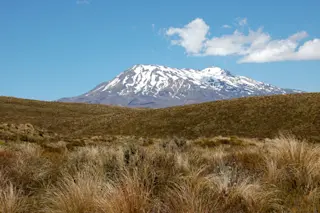Ruapehu in New Zealand, seen in January 2009 from the Tongariro Crossings trail. Image: Erik Klemetti It has been a busy year for New Zealand's GNS Science - the island nation's volcanoes have rumbled more in 2012 than in any year in decades. We saw eruptions from volcanoes that had been long quiet (Tongariro), that weren't recognized as active volcanoes (Havre) and pose a significant threat to tourists (White Island). Now it seems that New Zealand's most active volcano might get in on the action as Ruapehu has started to show signs that an eruption might be in the works. Ruapehu erupts relatively frequently, with its last sustained eruptive period coming from 1995-6, although small explosions that generated lahars occurred in 2006 and 2007. One of the key signs of an impending eruption at the volcano is the temperature of the summit crater lake - we've seen cycles were the ...
Increasing Heat Prompts Elevated Alert Status at New Zealand's Ruapehu
Signs of a potential Ruapehu volcano eruption raise concerns as activity increases, highlighted by the temperature of summit crater lake.
More on Discover
Stay Curious
SubscribeTo The Magazine
Save up to 40% off the cover price when you subscribe to Discover magazine.
Subscribe













